The expedition organized and led by the Portuguese navigator Ferdinand Magellan was the first circumnavigation of the World of history. But he could not complete it because he died in a confrontation with the natives in the Philippines Islands. Juan Sebastian Elcano, who captained the expedition from Tidore to Spain, and the 18 sailors who survived such an impressive feat, did. This trip was entirely financed by the Spanish crown. At that time the young Carlos I of Spain reigned and with it the old dream of Cristopher Columbus to reach the Indies always sailing westward was achieved. Although the South Sea had already been discovered by Vasco Núñez de Balboa in 1513 and it was known that crossing the Central American isthmus on foot and then embarking could make this trip, but the size of the South Sea was unknown and no one had appeared interested in venturing into something so risky.
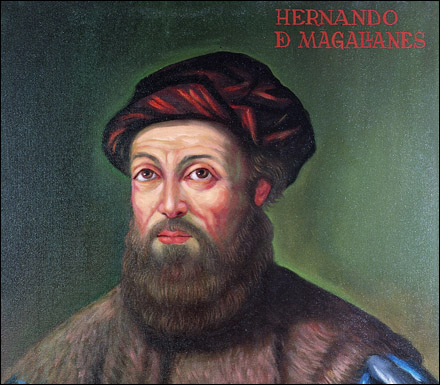
The Capitulations of Valladolid in 1519
Magellan had sailed for a long time in the Indian Ocean so he knew well the Asian and African coasts, but not the American ones. The Portuguese sailor had the idea of taking up again the project of Christopher Columbus and reaching the islands of the Spice by sailing westwards and overcoming the already known American continent at its southern end and crossing the South Sea to reach its goal. This project was proposed to the king of Portugal Manuel I but he considered that with the route already known to the Portuguese bordering Africa to reach Asian products made it uninteresting, besides the problems that could arise from the Treaty of Tordesillas that granted control of the area to Castile. But Magellan did not surrender and after asking the King of Portugal for permission to offer his services in other places, which eliminates the possibility of treating him as a traitor, he traveled to Spain and proposed the same project to Burgos Bishop Juan Rodríguez de Fonseca, right hand of King Carlos I and head of everything related to the Indies and overseas expeditions. There was some interest this time. For his peace of mind, the navigator assured the king that the entire route would always fall in the Castilian area, thus avoiding unwanted conflicts with the Portuguese. The initial idea of the trip was to get to the Moluccas and then return by the same route, that is, to cross the Pacific Ocean again and then ascend the Atlantic to Spain.
Through the Capitulations of Valladolid on March 22th, 1518 the king granted Magellan financial and material support and the title of governor and adelantado of the lands he discovered:
“Because you, Ferdinand Magellan, a knight born in the Kingdom of Portugal, and the Ruy Faleiro baccalaureate, also born in the Kingdom of Portugal, wanting to make us do a marked service, you are obliged to discover in the terms that belong to us and are ours in the ocean sea, within the limits of our demarcation, islands and firm lands, rich spices and other things that we will be very useful…”
In them was reflected some of the rights and grants granted to the capitulants:
- The fifth part of the rights and profits corresponding to King Carlos I.
- The title of governors and forwarders of conquered and discovered lands, these titles being inheritable in perpetuity.
- They are allowed to buy whatever they want in Asia and sell it in Castile just by paying the monarch one-fifth of the profits obtained.
- Of every six islands they discovered they could choose two where they would not have to pay the fifth real.
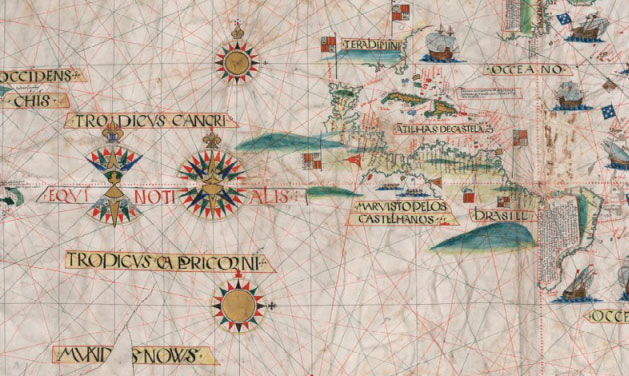
The Expedition
The expedition consisted of 5 naos, 239 men and provisions that had to allow sailing for two years. The captain ship was the Trinidad captained by Ferdinand Magellan and the rest of the ships were the San Antonio of Juan de Cartagena, the Concepción of Gaspar de Quesada, the Victoria of Luis de Mendoza and the Santiago of Juan Serrano. Among the crew members were Antonio Pigafetta, an Italian writer and diplomat who enlisted to be the official chronicler of the expedition and who would relate in his “Relation of the first voyage around the world” all the details of the trip. Although the task of doing so was not for a hobby of historical science and literature, but because the Spanish crown demanded to be informed of all the details of the expedition, also traveled in it accountants and royal officers who monitored and recorded all the economic facts of it. Nothing remained unrecorded. Astronomer Ruy Faleiro, the main organizer along with Magellan and who claimed that the South Sea was very small, was expelled from the expedition, it is said for health reasons, and the Spanish captain Juan de Cartagena was included instead.
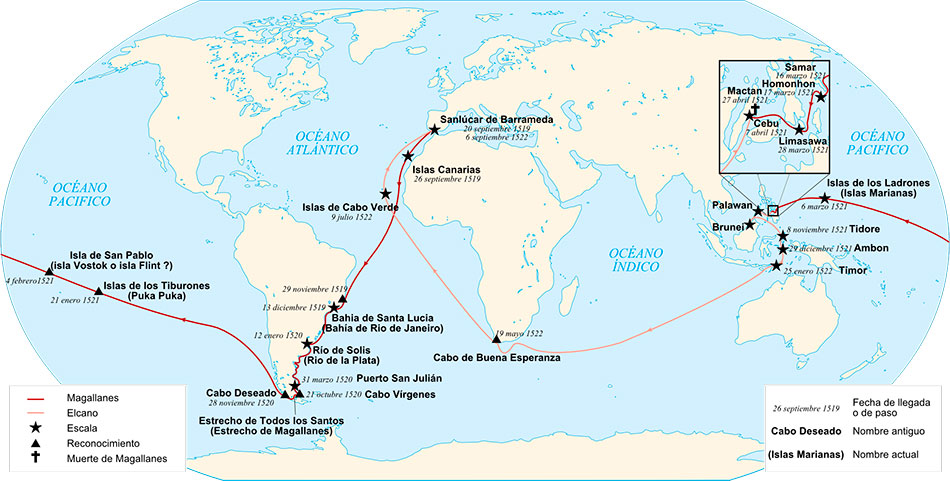
Departure from Seville, 10th August 1519
They left Seville on 10th August 1519 sailing the Guadalquivir River towards its mouth. After a few days they arrived in Sanlúcar de Barrameda (Cádiz – Spain), already on the Atlantic coast, where new adjustments were made to the expedition and several unforeseen problems were resolved. From here they departed on September 20th towards the Canary Islands where a first stopover would be made in Tenerife to provide themselves with more water and firewood, and continued to the Cape Verde Islands where Magellan on October 3th gave the order to turn west and set sail towards the coast of Brazil.
They sailed for a little over a month crossing the Atlantic Ocean undergoing several quite dangerous storms and after spending a month in South America, they arrived on December 13th at the Bay of Guanabara (Rio de Janeiro) where they disembarked to stretch their legs and recharge water and firewood and products from the area. They continued their journey along the Juan Díaz de Solís in his expedition of 1515 that led them to get into the Río de la Plata, known at that time as Río de Solís, during several kilometers thinking that this was the southern cape that would allow them to surpass the American continent. Disappointed sailors veered east to resume the current Argentine coast.
The Port of San Julián
They explored each bay, always to the south, each inlet of the sea trying to find that passage to the other Ocean but there was no luck and the weather was becoming more severe and colder. This led Magellan to decide to stop for a while to let winter pass. On March 31st, 1520 they found a sheltered bay called Puerto de San Julián and set out to winter for 6 months until the temperatures rose again. But what suddenly rose was the temperature of the expeditionaries when there was a rebellion of the Spanish captains who demanded to vote the return to Spain. They thought it was madness and certain death. The only answer they got was a resounding refusal from Magellan. Serious riots broke out that were suffocated and the rebels were finally apprehended. Three of the four captains were executed, only Juan de Cartagena was saved, who was banished and abandoned in those inhospitable lands. Something similar to being executed but slower and more painful.
On August 24th, the four surviving ships departed from San Julián, the nao Santiago had been stranded by a storm and had to abandon it, and they set out south, arriving at the end of October in a large bay called Todos los Santos. From there, and to minimize risks, they sent two ships to explore it and see what was there. After 3 days they returned, confirming that it did look like the southern passage, because after that bay there was another one with salt water. But that moment of joy had its bitter side for Magellan. The San Antonio pilot, Esteban Gómez, seeing the success, asked to return to Spain, argued that with that discovery had already fulfilled the mission and that they should return to inform, reorganize a new expedition and return to the route already discovered. But this did not please the Portuguese who refused roundly. Even so, the Castilian captain did not give his arm to twist and, disregarding the orders, one of the following nights he left for San Antonio and disappeared on his way to Spain. Luck wanted these fugitives on their way back to discover the Falkland Islands.
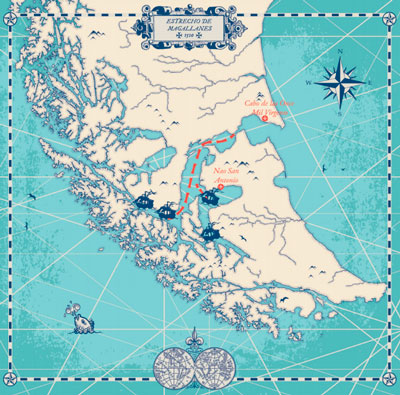
In the Strait of All Saints or Strait of Magellan
They continued sailing along the strait they called Todos los Santos, as well as the bay where they entered, observing the local fauna and flavor, the bonfires of the natives at night and anything that might be useful. Until suddenly they found themselves in the open sea on 27th November, they had managed to reach the Pacific Ocean. Magellan mistakenly decided not to touch the Chilean coast, a territory that had not yet been conquered by the Spaniards, and to go deep into the ocean, which he thought was the Indian Ocean and which in a few weeks would reach the Moluccan islands. I had no idea he was getting into the world’s largest mass of water. It would be three long months of sailing without finding a single island to obtain water and food. Hunger and scurvy scourged the sailors. Pigafetta narrates it very starkly in her Relationship of the journey:
“The sponge cake we were eating was no longer bread, but a powder mixed with worms that had devoured all its substance, and also had an unbearable stench because it was impregnated with rat urine. The water we were forced to drink was equally rotten and stinking. In order not to starve to death, we were still forced to eat pieces of cow leather lined with the big cock to prevent the wood from destroying the ropes. This leather, always exposed to the water, the sun and the winds, was so hard that it was necessary to immerse it for four or five days in the sea to soften it a little; to eat it we put it immediately on the embers. Often we were still reduced to feeding on sawdust, and even rats, so repellent to man, had become such a delicate food that half a ducat was paid for each…”
The Mariana Islands
After three hellish months surrounded by salt water and sunshine, starvation and disease in which more than 30 men died on March 6th,1521, they spotted a tropical island full of palm trees and vegetation. They were on the island of Guam, which they called Thieves’ Island because of the indiscriminate assault of expeditionaries by the local natives on board the ships to rob them of everything they could. Once the thieves had been subjected and normality recovered, they loaded the ships with water, meat and fruit and set out to continue sailing in search of the islands of the Species.
Death of Ferdinand Magellan
Hundreds of islands opened before them. They called them Islas del Poniente, later known as Islas Filipinas in honor of the then Prince of Asturias Felipe, who in a few years would become King Felipe II. They made their first contact with the natives, specifically on the island of Mactan, in the village of Cebu, they reached an agreement with King Hamubon to help him in his war against the chieftain Silapulapu. On April 27th,1521 Magellan marched along with some of his men to the island of said cacique with the intention of taking it by force and thus fulfill their commitment, but the natives were waiting for them and fell into an ambush in which Magellan was mortally wounded by a poisoned arrow. His corpse remained there and could not be picked up by his men.
He was replaced at the head of the expedition by Captain Duarte Barbosa. But the misfortune of the expedition did not end here. King Hamubón suspected that the Spaniards could betray him and murdered 27 Spaniards deceived with a fictitious banquet, including Barbosa. The survivors fled from there before falling into the hands of the natives in two of the naos, the Trinity, commanded by Gomez Espinosa who was appointed as the new captain general of the expedition, and the Victoria, commanded by Juan Sebastian Elcano. Nao Concepcion had to be abandoned and burned on the island of Bohol to keep it from falling into enemy hands. The low number of survivors would not be able to rule 3 naos, there was no other remedy.
During the month of May and June they sailed between the islands of the Chinese Sea until they arrived in July on the island of Borneo. There, the rajá Siripada invited the foreigners to a banquet where they could observe that the Bornanos wrote and had refined and very advanced customs. But they saw nothing more commercially interesting and decided to continue in search of the Moluccan islands that were, after all, the goal of their journey and what would get them out of the filth and poverty in which they found themselves.
Arrival to Tidore Island
Finally, on November 8th,1521, they arrived at the island of Tidore, one of the Moluccan islands. These islands are a group of about thirty small islands of volcanic origin. The welcome was very pleasant and they began to negotiate with Sultan Almansur offering Castilian utensils in exchange for cloves and nutmeg. They had to act quickly because these islands were in the Portuguese zone, not as promised by the astronomer to King Charles. They loaded the two ships with Asian wealth and tried to leave but in the same port the Trinity began to make waters and had to stay to be repaired, this increased the risk of being intercepted by the Portuguese so the captains of the expedition decided that Victoria nao continued the trip to Spain to the west and not as was planned to return where they had come from. The reason for this decision is not exactly known, but in my opinion this made the journey more difficult because they would have to cross through the centre of the Indian Ocean, an unknown route because there were no known islands, although this reduced the possibility of falling into Portuguese hands. The Trinity nao, once repaired tried the tournaviaje as planned but the continuous storms returned it to the Moluccas islands and finally, as feared, was captured by the Portuguese. Of its 50 crew members, 30 died while trying the Pacific tour. Of the rest, only four managed to return to Europe.
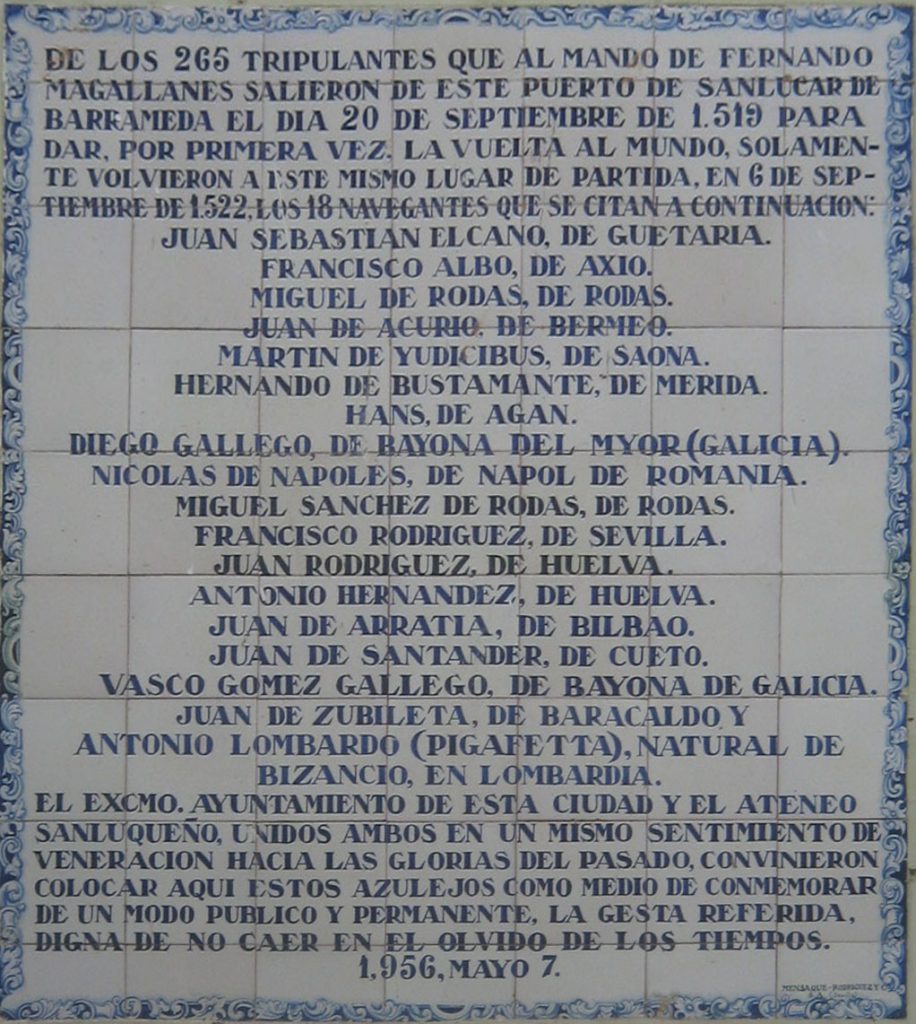
Return to Spain
They arrived in Timor where they stocked up to start the crossing of the Indian Ocean. From there they departed on 11th February 1522, rounded the Cape of Good Hope avoiding the African ports but at the height of the Cape Verdean islands they had neither water nor food and the nao presented several waterways of concern. They decided to dock on the island of Santiago and pretending to come from America on an expedition to ask for help from the Portuguese, who initially showed themselves collaborators but when they realized that this ship was coming from the Moluccan islands they stopped the fifteen Spanish sailors who had landed but not the rest who managed to flee to Spain.
Juan Sebastián Elcano arrived in Sanlúcar de Barrameda on 6 September and in the port of Seville on 8th September 1522. The first circumnavigation of history had been completed, which took them about 75,000 km and was the first definitive test of the Earth’s sphericity, although this fact had long been known. The day after the arrival in Seville, the 18 survivors in shirts and barefoot with a candle in their hands made good on their promise to visit the churches of Nuestra Señora de la Victoria and Santa María de la Antigua.
Two hundred and thirty-nine men departed from Sanlúcar and only 18 returned to the command of Juan Sebastian Elcano and another four months after the Trinity nao. With the spices transported, the expedition made considerable profits.